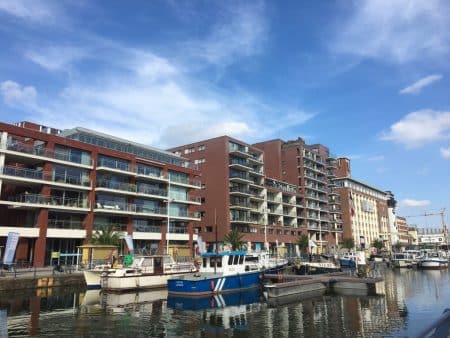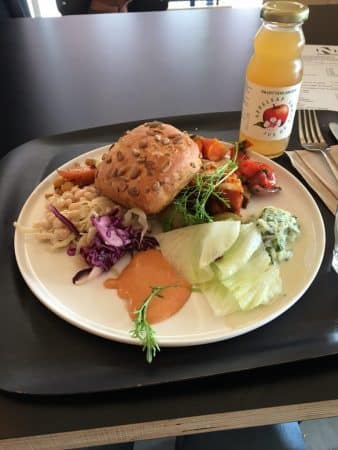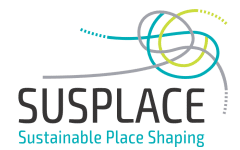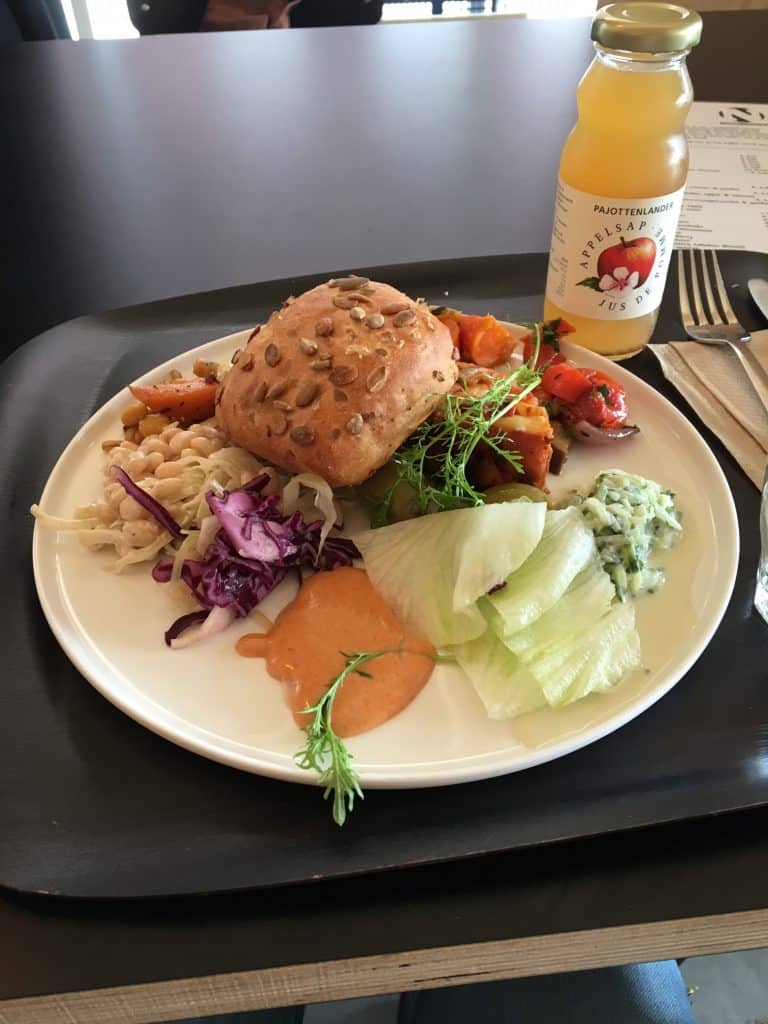
From 10-14 October 2016, the Vietnam Cooperative Alliance Nam Dinh visited the University of Leuven to learn about Community Supported Agriculture. I was able to accompany them on some of their excursions, with the most fascinating being a lunch at a restaurant called Noordoever.
Noordoever provided the catering for the group for the entire week, so we thought it would be a valuable experience to visit the location and learn more about the journey that the food has taken. Located in the recently gentrified pre-industrial zone in the north of Leuven, the restaurant has an open, light feel with large windows exposing the canal-side view. Although it was full of professionals on lunch breaks and retired couples sipping on wine, this is no ordinary restaurant.
 Noordoever prides itself on its unusual and unique take on supplying food to locals. Sourcing primarily organic, seasonal local food, this restaurant favours a buffet approach, rather than table service, for a very good reason. After selecting your largely vegan dishes – from lasagne, to soup to bean salads – your plate is weighed and this determines the price that you pay. This is a conscious attempt to reduce food waste and draws on psychological models that show that such an approach motivates people to give more thought to how much they are able to eat and make better decisions as a result. Food waste is a huge problem for modern societies. In Europe alone, it is estimated that we produce 88 million tonnes of food waste a year. With an abundance of cheap, processed food readily-available all year around, and with price and convenience often at the top of the list of people’s priorities, we are not often incentivised to make more meaningful and ethical food choices.
Noordoever prides itself on its unusual and unique take on supplying food to locals. Sourcing primarily organic, seasonal local food, this restaurant favours a buffet approach, rather than table service, for a very good reason. After selecting your largely vegan dishes – from lasagne, to soup to bean salads – your plate is weighed and this determines the price that you pay. This is a conscious attempt to reduce food waste and draws on psychological models that show that such an approach motivates people to give more thought to how much they are able to eat and make better decisions as a result. Food waste is a huge problem for modern societies. In Europe alone, it is estimated that we produce 88 million tonnes of food waste a year. With an abundance of cheap, processed food readily-available all year around, and with price and convenience often at the top of the list of people’s priorities, we are not often incentivised to make more meaningful and ethical food choices.
Not only does Noordoever address food waste by targeting human behaviour change, any food waste that is produced gets sent straight back to the farms as animal feed. On top of that, it is consciously reducing other environmental problems throughout the supply chain. Sourcing the majority of the produce from local farmers, the owner does not negotiate the price but accepts that the price offered is fair and is what the farmer needs to have a dignified return. One of the main characteristics of CSA is that the consumer and the producer share the risks of food production and it is a relationship built on trust. The produce is also delivered in the least harmful way possible either by bike or electric car and most materials used in the restaurant are environmentally friendly.
 The group and I were lucky enough to get a short presentation by the owner who explained that he had had a long journey to realise this concept. Inspired by similar restaurants in New York and Switzerland, he waited many years before the time was right to invest in this space. He explained that although he could bulk-buy produce from a wholesaler, it would have less value as he would not know how or where it had been grown and he would miss the relationship he has with the farmers. The loyal clientele he enjoys indicates that he has fulfilled many people’s need for such non-monetary value in food. Emphasising that, for him, it is not just a restaurant, it is a whole movement that goes beyond simply selling food. It is about being a positive influence on the local area, generating social interactions and greater awareness of the damage that conventional food can produce. I was impressed by his conviction and the success of his business model, that goes against traditional economics and promotes eating less food but of a better quality.
The group and I were lucky enough to get a short presentation by the owner who explained that he had had a long journey to realise this concept. Inspired by similar restaurants in New York and Switzerland, he waited many years before the time was right to invest in this space. He explained that although he could bulk-buy produce from a wholesaler, it would have less value as he would not know how or where it had been grown and he would miss the relationship he has with the farmers. The loyal clientele he enjoys indicates that he has fulfilled many people’s need for such non-monetary value in food. Emphasising that, for him, it is not just a restaurant, it is a whole movement that goes beyond simply selling food. It is about being a positive influence on the local area, generating social interactions and greater awareness of the damage that conventional food can produce. I was impressed by his conviction and the success of his business model, that goes against traditional economics and promotes eating less food but of a better quality.
The ethos of the Noordoever restaurant aligns with some of the major themes of the SUSPLACE project. Namely, ‘Inclusive Places’, that seeks to encouraging participation in social innovation, social cohesion and responsibility towards the place, and ‘Greening Economies’ that focuses on socially just, environmentally aware business models. This visit tied closely into the research that I am undertaking as part of the ‘Inclusive Places’ theme, as I am seeking to understand what leads people to become active agents in the food system to make it more sustainable as a whole. My focus is on the ‘inner dimension’ of sustainability and how people undergo behavioural transformations. This visit did, however, revive a question that I have frequently encountered throughout my research for SUSPLACE – is consuming sustainable food an elite practice? Of course, for Leuven, the location of this restaurant is ideal as it is surrounded by modern, renovated flats full of young professionals, but would such a restaurant work in a lower-income area? These are issues that I am seeking to explore in more detail in order to understand the potential barriers to making sustainable food more inclusive.
Nevertheless, I was inspired by Noordoever’s success in encouraging pro-environmental behaviour by focusing on psychological tools and focusing on reducing its environmental and social harms. I look forward to visiting again and supporting this innovative vision for the future of restaurants and encourage everyone to identify similar businesses that are no doubt popping up across Europe.
For more reading on CSA and pro-environmental behaviour visit:
- https://communitysupportedagriculture.org.uk/
- http://www.behaviouralinsights.co.uk/
- http://www.climateaccess.org/resource/transforming-behaviour-change-beyond-nudge-and-neuromania
- Jackson, T. (2005). Motivating sustainable consumption: a review of evidence on consumer behaviour and behavioural change. University of Surrey.
- Kollmuss, A. & Agyeman, J. (2002). Mind the Gap: why do people act environmentally and what are the barriers to pro-environmental behavior? Environmental Education Research, 8(3), pp.239–260.

